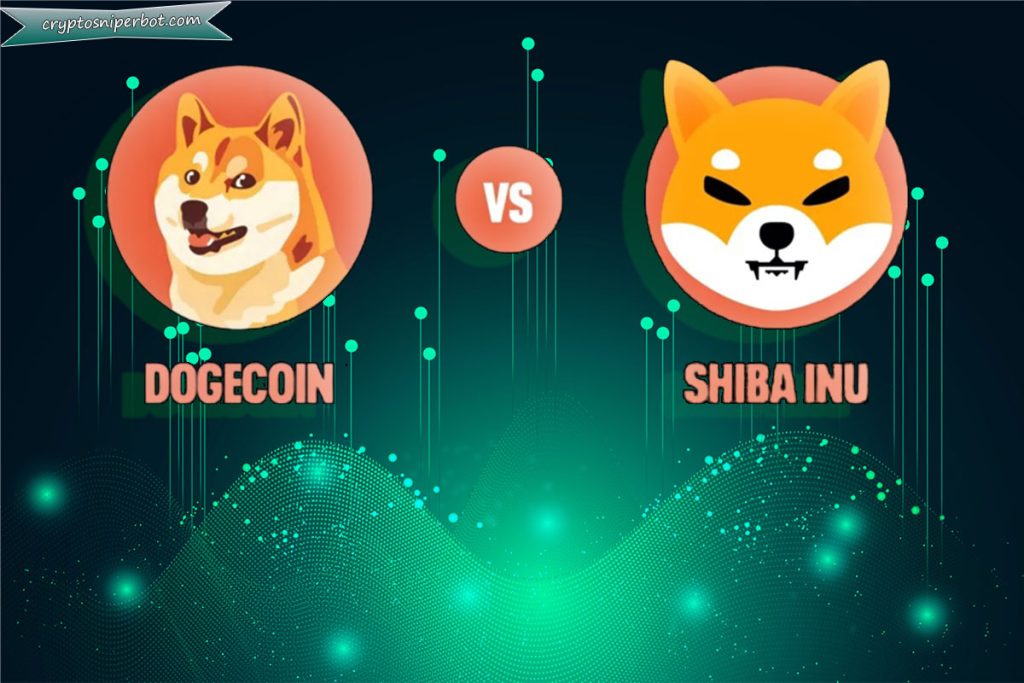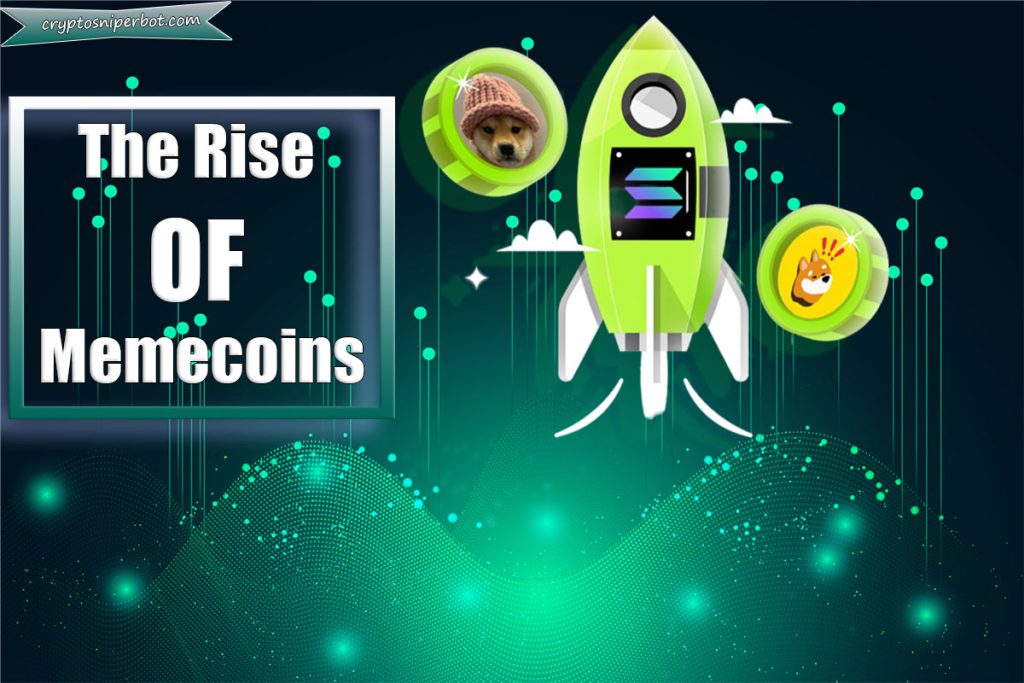In the ever-evolving landscape of cryptocurrency, a unique subset known as “meme coins” has captured the attention of investors and internet enthusiasts alike. These digital currencies, often inspired by internet memes and characterized by their humorous origins, have transitioned from jokes to significant players in the crypto market. This article delves into the rise of meme coins, focusing on prominent examples like Dogecoin and Shiba Inu, and explores their impact, challenges, and future prospects.
Table of Contents
The Genesis of Memecoins
Meme coins are cryptocurrencies that originate from internet memes or possess humorous characteristics. They often serve as a critique of the cryptocurrency market or aim to make digital currencies more accessible to the general public. The term is sometimes used dismissively, comparing the value or performance of these cryptocurrencies to more mainstream ones. However, supporters note that some meme coins have gained social currency and achieved high market capitalizations.
Dogecoin’s Meteoric Rise
Dogecoin, created in 2013 by software engineers Billy Markus and Jackson Palmer, was initially intended as a joke to mock the wild speculation in cryptocurrencies at the time. Featuring the face of Kabosu, a Shiba Inu dog from the “Doge” meme, as its logo, Dogecoin quickly developed its own online community. Despite its satirical nature, it reached a peak market capitalization of over $85 billion on May 5, 2021.
The influence of celebrity endorsements, particularly from Elon Musk, significantly impacted Dogecoin’s market value. Musk’s tweets and public statements often led to substantial price fluctuations, highlighting the power of social media in the cryptocurrency market. Additionally, Dogecoin’s integration into mainstream commerce, such as its acceptance by companies like Tesla for merchandise purchases, further solidified its position in the crypto space.
Emergence of Shiba Inu
Shiba Inu (SHIB), launched in August 2020 by an anonymous developer known as “Ryoshi,” was created as an experiment in decentralized community building. Often dubbed the “Dogecoin killer,” SHIB gained significant attention and experienced a substantial surge in October 2021, briefly surpassing Dogecoin’s market capitalization.
The Shiba Inu ecosystem has expanded to include ShibaSwap, a decentralized exchange, and Shibarium, a layer-2 solution aimed at enhancing transaction speed and reducing costs. These developments demonstrate the project’s commitment to building a robust and scalable platform for its community.
Comparative Analysis: Dogecoin vs. Shiba Inu
| Metric | Dogecoin (DOGE) | Shiba Inu (SHIB) |
|---|---|---|
| Market Capitalization | $8.2 billion | $3.9 billion |
| Circulating Supply | 130 billion | 589 trillion |
| Blockchain Platform | Own blockchain | Ethereum (ERC-20) |
| Consensus Mechanism | Proof of Work | Proof of Stake |
Both Dogecoin and Shiba Inu have active communities and significant social media presence. Dogecoin’s subreddit boasts over 2 million members, reflecting its widespread popularity. While Dogecoin is accepted by various merchants, Shiba Inu focuses on building its decentralized ecosystem, offering diverse use cases for its users.
The Role of Memecoins in the Cryptocurrency Market
Memecoins are known for their high volatility, often driven by social media trends and speculative trading. They attract retail investors seeking quick gains, contributing to dynamic market behaviors. However, this volatility has led to increased scrutiny from financial regulators concerned about market manipulation and investor protection. For instance, Thailand’s Securities and Exchange Commission banned meme coins as part of a crackdown on digital goods with “no clear objective or substance.”
Future Prospects and Challenges
The sustainability and long-term viability of meme coins remain subjects of debate. While technological developments, such as Shiba Inu’s Shibarium, aim to enhance functionality and security, the enduring value of these coins beyond their meme status is uncertain. Community engagement plays a crucial role in sustaining interest and development, but regulatory challenges and market dynamics pose ongoing obstacles.
Conclusion

The rise of meme coins like Dogecoin and Shiba Inu underscores the evolving nature of the cryptocurrency market. From their humorous beginnings to becoming significant market players, these digital assets highlight the power of community and social media in shaping financial trends. As the market continues to mature, the future of meme coins will depend on their ability to adapt, innovate, and maintain the trust of their communities.
Frequently Asked Questions (FAQs)
What is a meme coin?
A meme coin is a type of cryptocurrency that originates from internet memes or possesses humorous characteristics. They often serve as a critique of the cryptocurrency market or aim to make digital currencies more accessible to the general public.
How did Dogecoin start?
Dogecoin was created in 2013 by software engineers Billy Markus and Jackson Palmer as a joke to mock the wild speculation in cryptocurrencies at the time. It features the face of Kabosu, a Shiba Inu dog from the “Doge” meme, as its logo.
What is Shiba Inu (SHIB)?
Shiba Inu is an Ethereum-based altcoin that features the Shiba Inu hunting dog as its mascot. It is widely considered an alternative to Dogecoin and is touted as “the Dogecoin killer” by its supporters.
Are meme coins a good investment?
Meme coins, while popular, are known for their high volatility and speculative nature. Investing in meme coins can lead to significant gains, but it also carries substantial risk. Their value is often driven by social media trends, celebrity endorsements, and market sentiment rather than concrete use cases or technological innovation. For those considering investing in meme coins, it’s essential to conduct thorough research and only invest what they can afford to lose.
Why do meme coins like Dogecoin and Shiba Inu have such high supply?
Meme coins often have large circulating supplies to make their tokens feel accessible and affordable to the average investor. For example, Dogecoin has over 130 billion tokens in circulation, and Shiba Inu’s supply exceeds 589 trillion tokens. This high supply, coupled with a low token price, can create the illusion of affordability and appeal to new investors. However, the vast supply also means that achieving a high per-token price is challenging without significant demand.
Will meme coins last in the long term?
The future of meme coins is uncertain. While Dogecoin and Shiba Inu have seen substantial success, the longevity of meme coins will likely depend on their ability to evolve and provide meaningful value beyond their novelty. As cryptocurrency technology advances, meme coins with strong communities and tangible applications may have a better chance of enduring. However, their inherent volatility and association with speculative trading may pose challenges to long-term stability and credibility.
The rise of meme coins has undoubtedly added a unique dimension to the cryptocurrency landscape. From Dogecoin’s initial role as a humorous commentary on crypto to Shiba Inu’s community-driven ecosystem, these assets represent both the playful and speculative sides of digital currency. For some, meme coins are an accessible entry point into cryptocurrency; for others, they highlight the market’s unpredictable nature. As the digital finance world continues to develop, meme coins stand as a testament to the power of community, internet culture, and the ever-evolving landscape of financial innovation.
References
This article explores the phenomenon of meme coins, from their inception to their impact on cryptocurrency markets, and offers insights into their potential future. As with all investments, approaching meme coins with caution and a clear understanding of the risks involved is key.

